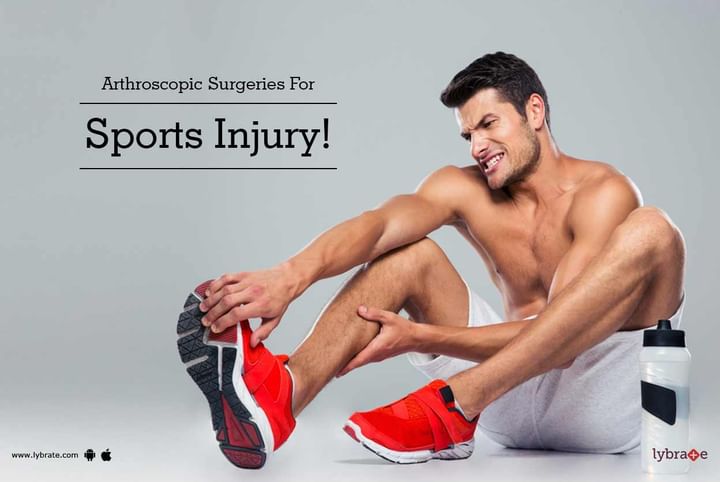Arthroscopic Surgeries For Sports Injury!
When it comes to contact sports like football or basketball, orthopaedic injuries are unavoidable. Given the high risk of falling and accidents and wear and tear of muscles, injuries like stress fractures, torn ligaments, ACL tears and chronic pain are common complaints a sports doctor comes across. Not all orthopaedic doctors can deal with sports injuries. Sports medicine is a specialisation of this field that deals exclusively with the prevention, diagnosis and treatment of injuries sustained while playing sports. A sports doctor must not only treat an injury but must also speed up the healing process so as to allow their patients to return to the field as quickly as possible.
When it comes to surgeries for sports injuries, the smaller the incision made, the faster an injury will heal. This has led to the popularisation of minimally invasive surgeries. Arthroscopy is one such type of minimally invasive surgery that is used by doctors to diagnose and treat joint injuries and musculoskeletal conditions.
This procedure is typically performed on a patient under general or spinal anaesthesia. When being used to diagnose a condition, it involves the insertion of a thin fibre optic tube with a light, magnifying lens and camera into the body through a small incision no bigger than a buttonhole. This allows the doctors to examine the bone and joint in detail. In cases where this type of surgery is being used to treat a patient, specially designed instruments may also be inserted through an additional small incision to repair the injury.
Arthroscopic surgeries for sports injuries are often used in combination with other approaches or open surgery. One of the most common conditions, this type of surgery is used to treat are tendon tears in the knee. Other conditions that can also be treated with arthroscopic surgeries are torn ligaments and cartilage, inflammation of the joint lining, carpal tunnel syndrome, tears in the rotator cuffs and loosening of bones and cartilage.
After the surgery, the incision will be stitched shut and a dressing will be placed over it. In most cases, patients require almost no pain medication as compared to the medication needed to recover from open surgery.
However, it can take several days for the joint to recover and for the incision to heal. Some of the benefits of this kind of surgery are:
- Faster healing
- Minimal scarring
- Lesser blood loss
- No danger of cutting muscles or tendons
- More comfortable rehabilitation
- Faster return to the sports field
Preventive measures
In order to reduce the risk of an injury, it is advised to follow these simple tips:
-
Set realistic goals for yourself: Don’t go overboard with anything that includes repetitively stressing and straining your body over a certain degree. If you are planning to go for a run or hit to the gym, make sure you set goals that you can sustain and find feasible. One example of this would be to not increase the amount of weight drastically while lifting weights as it can lead to serious injuries.
-
Follow the right technique: Proper technique is very important in sports, a lack of which can lead to injuries. Ask your trainer to observe your form when you perform any activity. Focus on your breathing and posture when you are exercising.
-
Warm-up before you begin exercising: Warming up before you exercise or play a sport is important as it helps loosen your muscles and boost blood circulation. It drastically reduces the risks of sustaining injuries and also prepares your body for the subsequent exercise.
-
Cooldown: Similar to an essential warm-up is the need to cool down; it is another aspect that should not be ignored. Cooling down usually consists of stretches and postures that promote flexibility. The muscles become sore after working out. Stretching can help reduce post-workout pain and make the joints flexible. Cooling down also helps in eliminating lactic acid from the muscles, which means less pain after exercise.
-
Listen to your body: During an activity, if you feel that you can no longer carry on, terminate the activity. The chances of injury rise if you continue to push your body over your threshold limit. If you think that you can no longer carry on doing something without risking an injury, avoid doing it altogether. Listen to your body, and it shall never fail you.



+1.svg)
